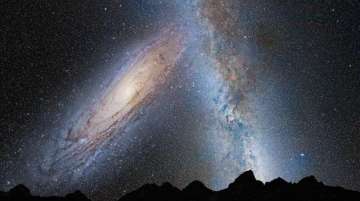London: One third of humanity cannot see the Milky Way at night due to the luminescent glow of artificial light, say scientists who created a new world atlas of light pollution.
Artificial light pollutes the night sky for more than 80 per cent of the world’s population, researchers said.
The atlas, created by Fabio Falchi and colleagues at the Light Pollution Science and Technology Institute in Italy, displays population and land-based light pollution statistics for all countries, showing the magnitude of the problem for each and facilitating easy comparison of national and global levels of light pollution.
The atlas will be an important tool for studying artificial light as an environmental pollutant with potential health and ecological consequences, researchers said.
It also sets a precise point against which to compare future increases or decreases in global light pollution.
Light pollution is no longer merely an annoyance for astronomers.
The artificial brightening of the night sky is profoundly altering a fundamental human experience — the opportunity for each person to view and ponder the sky above in evening hours.
Even small increases in night sky brightness degrade this experience, researchers said.
Despite its global presence and potential environmental risk, light pollution has received relatively little attention.
Unlike other pollutants, such as noise levels in the oceans, artificial light levels are poorly quantified.
Over a decade ago, Falchi and colleagues created the first world atlas of artificial night sky brightness.
In the new study, they updated their original work by creating another, more precise atlas that incorporates new tools and uses new data from a high-resolution satellite.
The atlas shows that 99 per cent of the U.S. and Europe live under light polluted skies. The researchers considered “polluted” to be the level of brightness at which artificial light substantially obscures astronomical observations.
The atlas also unveils that in some places with high levels of light pollution, such as Singapore, people never experience conditions resembling true night because it is masked by artificial twilight; in such places, most of the population lives under skies so bright that their eyes cannot fully adapt to night vision.
On the other hand, countries with populations least affected by light pollution are Chad, the Central African Republic, and Madagascar.
More than three quarters of inhabitants in these places live under pristine, ink-black night sky conditions.
The study was published in the journal Science Advances.
Latest World News
